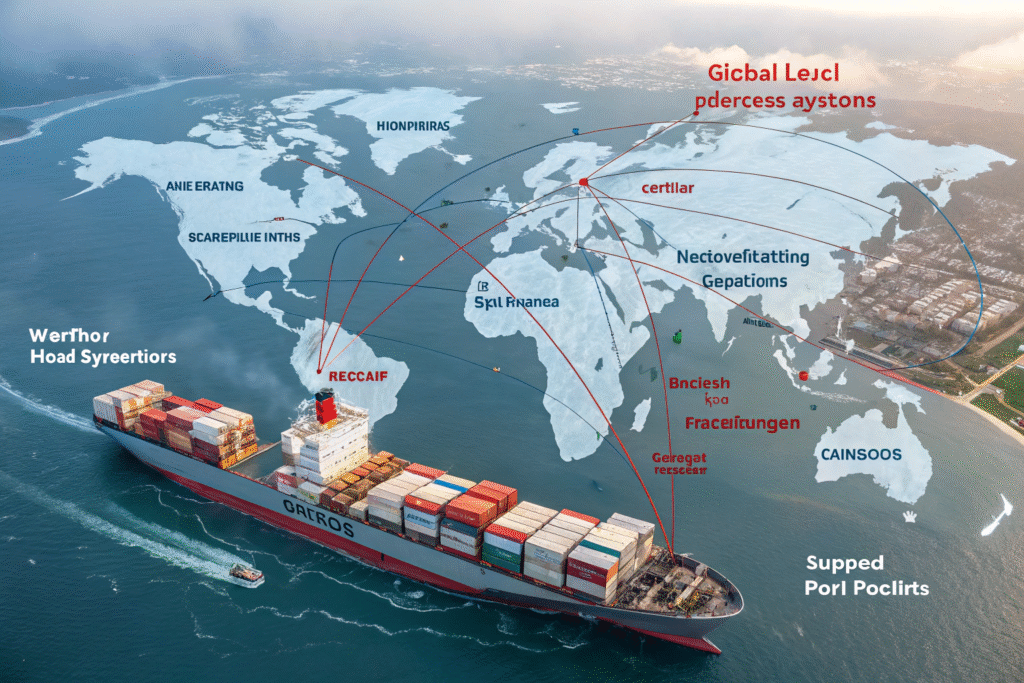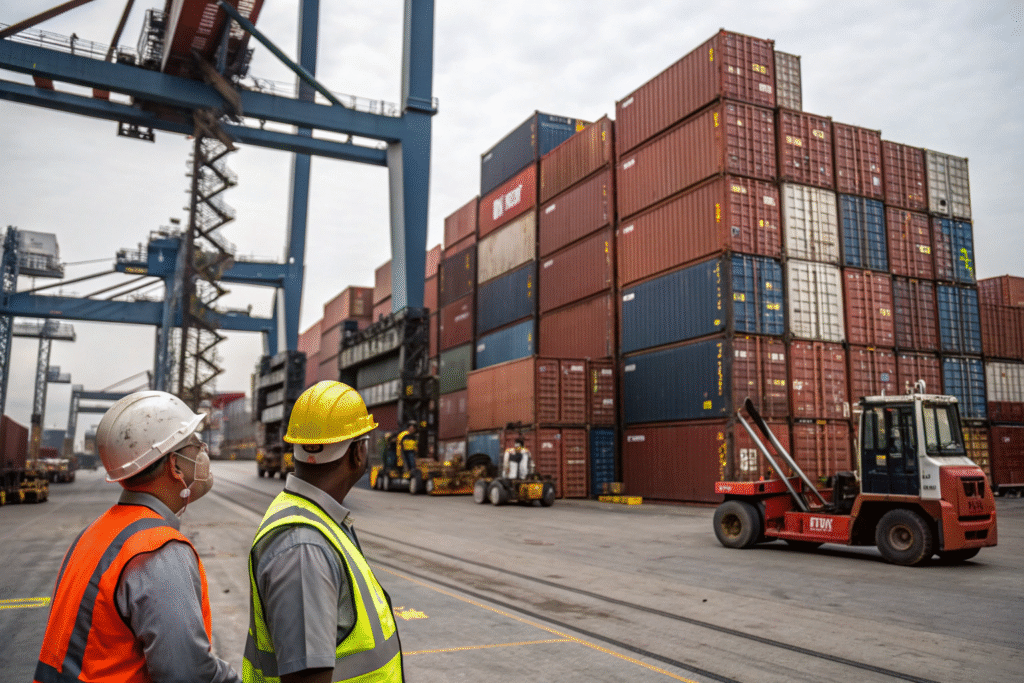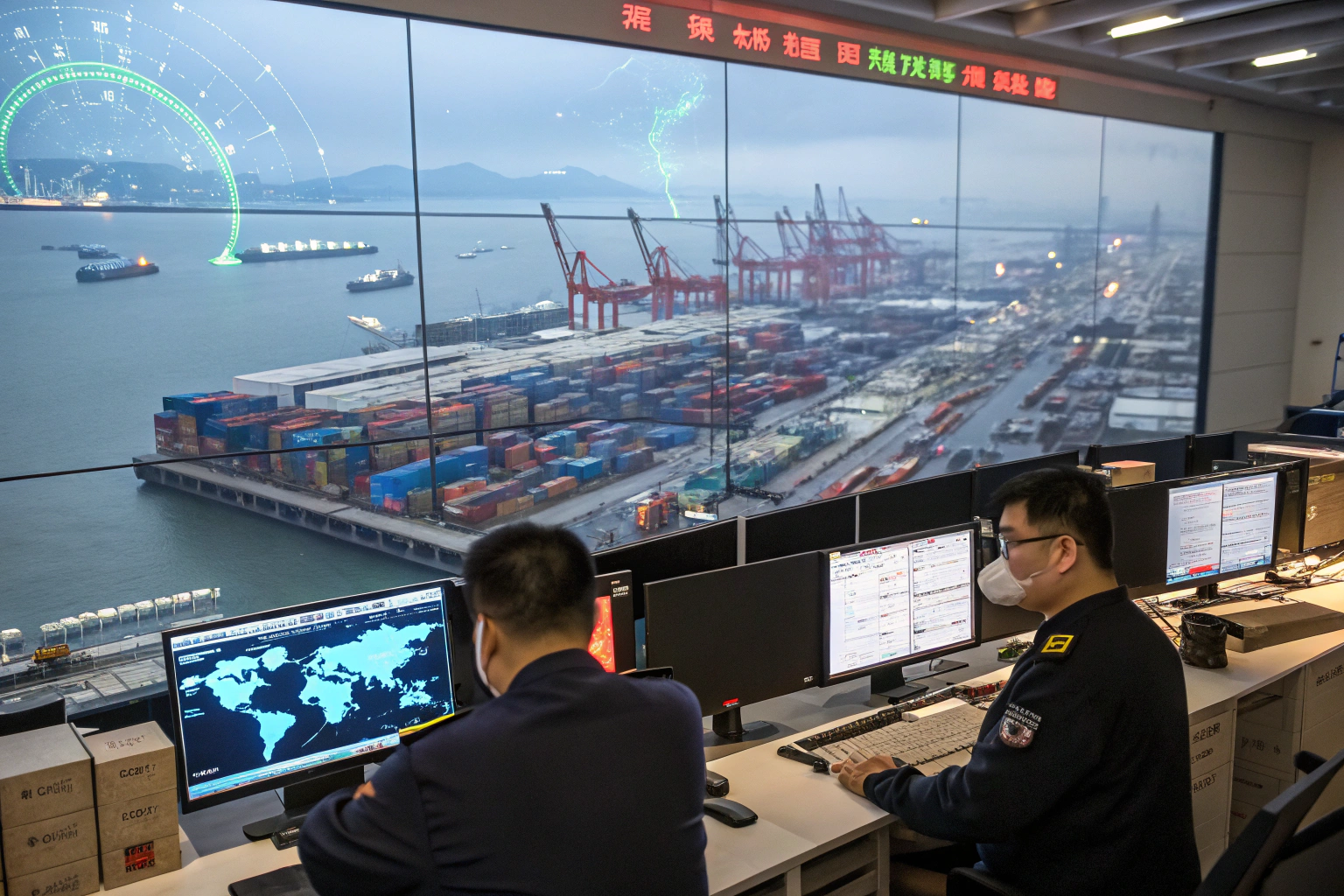Experiencing unexpected delays with shipments from China can disrupt your supply chain, impact customer satisfaction, and create financial strain. When goods that typically move smoothly suddenly get stuck, understanding the root causes becomes crucial for finding solutions and preventing future occurrences.
Shipments from China face sudden delays due to port congestion, weather disruptions, customs issues, carrier schedule changes, and seasonal peaks. Recent factors include Red Sea routing changes, Chinese holiday backlogs, and increased security screenings. Understanding these causes helps you develop contingency plans and manage expectations.
Let's examine the specific factors currently impacting shipping timelines from China and how you can navigate these challenges effectively.
What external factors are causing widespread delays?
Several macro-level factors beyond individual shippers' control are currently creating delays throughout the China-US supply chain. These systemic issues affect all importers regardless of their specific logistics arrangements.
The Red Sea situation has caused significant vessel rerouting around Africa's Cape of Good Hope, adding 10-14 days to transit times and reducing available capacity. Simultaneously, Chinese factories accelerated shipments before the Chinese New Year, creating a post-holiday backlog that strained port operations. Additionally, severe weather conditions in both Asia and North America have disrupted vessel schedules and port operations. These combined factors have created a perfect storm of delays that requires strategic adaptation.

How is the Red Sea situation affecting China shipments?
The Red Sea disruptions have created ripple effects:
- Longer transit times as vessels avoid the Suez Canal
- Reduced vessel availability as ships spend more time at sea
- Equipment imbalances with containers stuck on longer journeys
- Schedule reliability degradation across all carrier services
- Capacity constraints leading to shipment rollovers
These impacts affect even shipments not traditionally routed through the Red Sea due to global network effects.
What weather factors are currently causing problems?
Multiple weather systems are creating challenges:
- Typhoon season in Asia affecting port operations
- Winter storms in North America disrupting US port productivity
- Fog conditions in Chinese ports causing sailing delays
- High winds creating dangerous cargo handling conditions
- Extreme temperatures affecting equipment performance
Weather-related delays are often unpredictable and can compound other disruption factors.
What operational issues contribute to delays?
Beyond external factors, numerous operational challenges within the supply chain can slow your shipments. These issues often stem from capacity constraints, equipment shortages, and process inefficiencies that emerge during peak periods.
Port congestion remains a persistent issue, particularly at key US West Coast gateways like Los Angeles and Long Beach. Equipment shortages, especially of specialized containers, continue to plague certain trade lanes. Carrier schedule reliability has decreased significantly, with vessels often arriving days later than scheduled. Additionally, labor challenges at various points in the supply chain create bottlenecks that slow cargo movement. These operational factors often interact, creating compound delays that extend far beyond initial estimates.

How does port congestion impact your shipments?
Port congestion creates multiple delay mechanisms:
- Vessel queuing waiting for berth availability
- Extended container dwell times due to limited pickup windows
- Equipment unavailability as containers remain stuck in ports
- Rail car shortages for inland point intermodal shipments
- Appointment backlogs for container pickup and return
These congestion effects can add weeks to your total transit time.
What equipment issues are causing delays?
Equipment challenges include:
- Container shortages at key Asian origins
- Chassis availability problems at US destinations
- Specialized equipment scarcity for specific cargo types
- Imbalanced equipment positioning due to trade flow changes
- Maintenance issues with aging equipment fleets
Proper equipment planning becomes crucial during tight market conditions.
How do documentation and compliance issues cause holdups?
Many delays originate from paperwork problems rather than physical transportation issues. Customs compliance, documentation accuracy, and regulatory requirements can stop shipments quickly, often at the most inconvenient points in the journey.
Incorrect or incomplete documentation represents one of the most common—and preventable—causes of shipment delays. The Importer Security Filing (ISF) must be accurate and timely, with significant penalties for non-compliance. Customs holds for examination or additional information requests can add days or weeks to your timeline. Additionally, increased enforcement of regulations like the Uyghur Forced Labor Prevention Act has created additional scrutiny and documentation requirements for many importers.

What documentation errors commonly cause delays?
Frequent documentation problems include:
- HS code misclassification triggering customs reviews
- Incomplete commercial invoices missing required information
- Value declaration discrepancies between different documents
- Missing certificates for regulated products
- Incorrect bill of lading details causing cargo release issues
These errors often go unnoticed until they create significant delays.
How can compliance issues stop your shipments?
Regulatory compliance challenges include:
- Forced labor documentation requirements for certain regions
- Product safety standards verification for consumer goods
- Intellectual property rights examinations for branded products
- Anti-dumping duty investigations for specific commodities
- Food and drug administration reviews for regulated items
Proactive compliance management prevents these potentially lengthy delays.
What seasonal factors are currently affecting timelines?
Understanding seasonal patterns helps distinguish temporary disruptions from longer-term trends. Several seasonal factors are currently converging to create particularly challenging conditions for China-US shipments.
The post-Chinese New Year period always creates shipment surges as factories resume production and work through order backlogs. The early-year inventory restocking cycle increases demand for vessel space. Additionally, contract season rate negotiations sometimes cause temporary capacity constraints as shippers and carriers position for negotiations. These seasonal patterns interact with the other disruption factors to amplify delay impacts during certain periods.

How does Chinese New Year impact shipping timelines?
The Chinese New Year effect creates:
- Pre-holiday shipping surge as factories clear backlogs
- Factory shutdown periods typically lasting 2-4 weeks
- Post-holiday production ramp-up taking several weeks
- Port congestion from concentrated shipment volumes
- Equipment shortages as containers reposition slowly
These factors combine to create significant delays during the first quarter.
What other seasonal patterns affect shipments?
Additional seasonal factors include:
- Retail peak season preparations beginning in mid-year
- Weather-related disruptions varying by season and region
- Agricultural harvest seasons affecting equipment availability
- Manufacturing cycle patterns in various industries
- Inventory tax considerations driving shipping decisions
Recognizing these patterns helps with better planning and expectation management.
Conclusion
Shipment delays from China result from a complex interplay of external events, operational challenges, documentation issues, and seasonal patterns. While some factors like weather and global disruptions are beyond your control, many delays can be mitigated through proactive planning, documentation accuracy, compliance diligence, and strategic partnerships. By understanding the root causes of current delays, you can develop contingency plans, communicate more effectively with customers, and make informed decisions about shipping methods and timing. The most successful importers build flexibility and redundancy into their supply chains, allowing them to navigate delays with minimal business impact.









